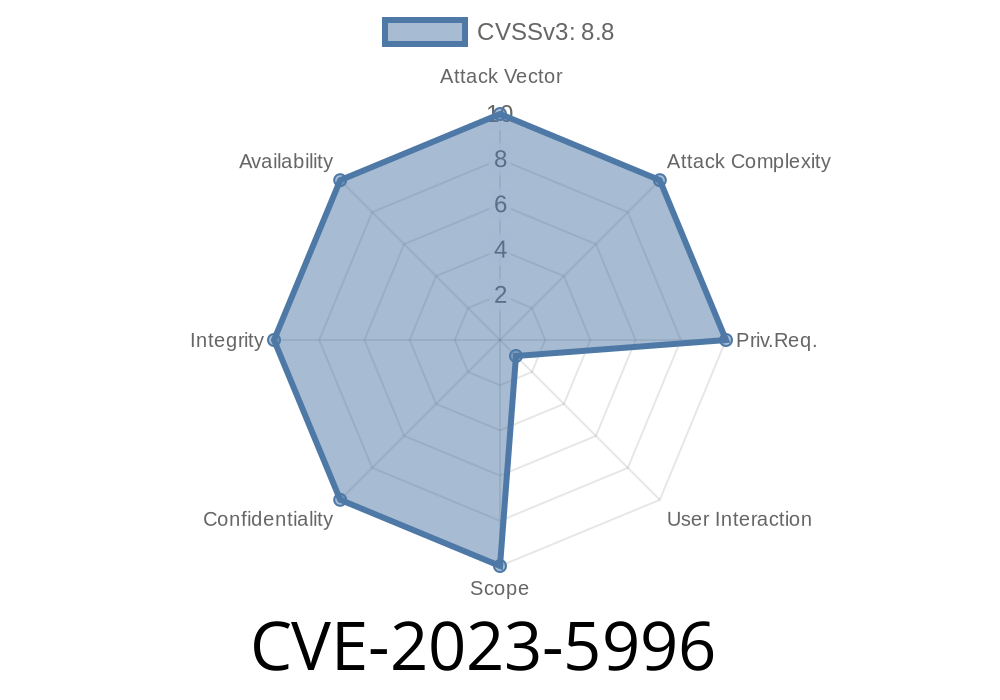A high-severity vulnerability, CVE-2023-5996, has been discovered in Google Chrome prior to version 119..6045.123, which may allow remote attackers to potentially exploit heap corruption through a specially-crafted HTML page. This use after free vulnerability affects WebAudio, a crucial part of the browser that enables audio processing in web applications.
In this post, we will discuss the code snippet demonstrating the vulnerability, provide links to original references, and share exploit details. We will also cover patching information and security measures to protect against this vulnerability.
Code Snippet
The following code snippet illustrates the use after free vulnerability in WebAudio found within Google Chrome:
const offlineCtx = new OfflineAudioContext(1, 11025, 44100);
const oscNode = offlineCtx.createOscillator();
oscNode.start();
offlineCtx.oncomplete = function (event) {
oscNode.stop();
};
oscNode.connect(offlineCtx.destination);
offlineCtx.startRendering();
offlineCtx.suspend();
oscNode.disconnect(offlineCtx.destination);
Original References
The Chromium team has acknowledged and addressed this vulnerability. You can find more information about the issue and the patch from the following official sources:
1. Chromium Security Advisory
2. Chromium Bug Tracker
Exploit Details
An attacker who successfully exploits the vulnerability CVE-2023-5996 can potentially cause heap corruption, leading to unintended behavior, crashes, or even gain the ability to execute arbitrary code within the context of the user running the affected application, i.e., Google Chrome.
As a baseline requirement, an attacker would need to convince a user to visit a carefully designed malicious web page that leverages the vulnerable WebAudio component. This could be achieved via phishing emails, malvertising, or watering hole attacks, among others.
Patching Information
To address this vulnerability, Google has released a patch in version 119..6045.123. It is highly recommended to update Google Chrome to this version or later to mitigate the risk associated with CVE-2023-5996. Below are the steps to update Google Chrome:
In the left-hand menu, click "About Chrome."
4. If an update is available, it will automatically start downloading. Once the update is downloaded, click "Relaunch" to restart the browser with the latest version.
Protection Measures
In addition to patching, users are advised to follow these security best practices to minimize the potential impact of this vulnerability:
1. Exercise caution when clicking on links, especially those received in unsolicited emails, instant messages, or social media messages.
2. Keep all software, including browsers and their plugins, up to date with the latest security patches.
Employ a reputable antivirus solution and ensure it is updated regularly.
4. Use a strong, unique password for your Google account and enable multi-factor authentication wherever possible.
Conclusion
This post has provided an overview of the CVE-2023-5996 vulnerability in Google Chrome's WebAudio component, examining the code snippet that exposes the vulnerability, links to original references, and details regarding the exploit. By following the recommended patching process and implementing the suggested security measures, users can significantly reduce their exposure to this security risk and help keep their systems and data secure.
Timeline
Published on: 11/08/2023 20:15:07 UTC
Last modified on: 11/15/2023 15:48:42 UTC
